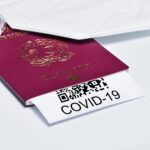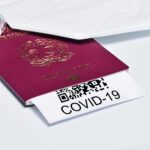Beyond the core requirements, a complete TR to PR application package includes several other important items. Digital photos meeting IRCC’s specific photograph specifications are required for the principal applicant and all accompanying family members. Applicants may also need to provide proof of settlement funds to demonstrate their financial ability to establish themselves in Canada, though this requirement is often waived for those who have a valid job offer and are currently working in Canada. For any information that requires further clarification or context, a Letter of Explanation (LOE) can be an invaluable tool. An LOE can be used to explain gaps in employment, address potential admissibility concerns, or clarify any other aspect of the application that might seem ambiguous to an immigration officer. Thorough preparation of these supplementary documents demonstrates diligence and can help create a clearer, more compelling case for approval.
Key Document Takeaways for TR to PR Applicants
- Language Tests: Book your IELTS, CELPIP, TEF, or TCF test early. Results must be less than two years old at the time of application submission.
- Employer Reference Letters: Ensure letters are on company letterhead and include your job title, dates of employment, salary, hours per week, and a detailed list of duties.
- Educational Credentials: For foreign education, secure an Educational Credential Assessment (ECA) well in advance, as this process can take several months.
- Police Certificates: Request certificates from every country (including Canada) where you have lived for six or more consecutive months since the age of 18.
- Application Forms: Always use the most recent versions of all required IRCC forms (IMM 0008, IMM 5669, etc.) and fill them out completely and accurately.
Frequently Asked Questions about TR to PR Pathway Documents
What is the most important information needed in an employer reference letter?
The most crucial details in an employer reference letter are the specific start and end dates of employment, the number of hours worked per week, and a comprehensive list of the duties and responsibilities performed. This information allows an immigration officer to verify that the work experience meets the requirements of the program and matches the claimed National Occupational Classification (NOC) code.
How old can my language test results be for a TR to PR application?
Your language test results from a designated provider like IELTS, CELPIP, TEF, or TCF must be less than two years old at the time you submit your permanent residence application. It is highly recommended to have valid test results on hand before the program opens to avoid any delays.
What does an Educational Credential Assessment (ECA) do?
An Educational Credential Assessment (ECA) is a report from an IRCC-designated organization that verifies your foreign educational credential (like a degree or diploma) is valid and equivalent to a completed Canadian one. This is often a mandatory document for applicants who are relying on foreign education to meet program eligibility.
Who needs to provide a police certificate in an application?
The principal applicant and any accompanying family members who are 18 years of age or older must provide police certificates. These are required from every country where they have lived for six consecutive months or longer since their 18th birthday.
Talk to us to find out more. ->
The content above is not intended to provide legal advice or opinions of any kind and may not be used for professional or commercial purposes.
Navigating the transition from temporary to permanent residence in Canada involves meticulous preparation, especially concerning documentation. For applicants aspiring to secure their future through a TR to PR pathway, understanding the specific requirements is the most critical step toward a successful application. This guide offers a comprehensive overview of the essential documents needed, ensuring prospective applicants are thoroughly prepared for the submission process. Preparing these items in advance can significantly streamline the journey to becoming a permanent resident of Canada.
Table of Contents
- 1. Forms and Status Documents: The Foundation of Your TR to PR Application
- 2. Proving Language Proficiency: An Indispensable Requirement
- 3. Documenting Work Experience: The Critical Employer Letter
- 4. Educational Credentials and Police Certificates
- 5. Finalizing Your Application: Supplementary Documents
- 6. Frequently Asked Questions about TR to PR Pathway Documents
Forms and Status Documents: The Foundation of Your TR to PR Application
The cornerstone of any immigration application is the correct completion of official forms and the provision of valid status documents. For the TR to PR pathway, Immigration, Refugees and Citizenship Canada (IRCC) requires a suite of forms that capture the applicant’s personal details, background, and family information. The principal applicant must complete the Generic Application Form for Canada (IMM 0008), the Schedule A – Background/Declaration (IMM 5669), and the Additional Family Information form (IMM 5406). Each of these documents must be filled out with precision, as any inconsistencies or omissions can lead to significant delays or even refusal. Beyond these, applicants may also need to submit a form for Use of a Representative (IMM 5476) if they have retained professional assistance. It is paramount that all forms are the most current versions available on the IRCC website at the time of submission. Applicants must also provide clear, legible copies of their current passport or travel documents, along with any other documents verifying their temporary resident status in Canada, such as a work permit or study permit. These documents serve as primary evidence of legal status and identity, forming the bedrock upon which the entire application is built.
Proving Language Proficiency: An Indispensable Requirement
One of the most crucial elements for the TR to PR pathway is demonstrating adequate language proficiency in either English or French. IRCC mandates that all applicants, regardless of their stream, must provide valid results from a designated language testing organization. These results are not merely a formality; they are a key eligibility criterion used to assess an applicant’s ability to integrate into Canadian society and the workforce. The acceptable tests for English are the IELTS General Training and CELPIP-General Test. For French, the TEF Canada and TCF Canada are the recognized options. It is essential to note that the test results must be less than two years old at the time the permanent residence application is submitted. Waiting until the last minute to book a language test can be a risky strategy, as testing centres often have limited availability, and it takes time to receive the official results. Proactive candidates schedule their tests well in advance of a program’s launch to ensure their results are ready. The required score, measured in Canadian Language Benchmarks (CLB), varies depending on the specific stream within the pathway, so applicants must carefully check the program requirements to ensure they meet the minimum threshold for their intended category.
Documenting Work Experience: The Critical Employer Letter
For streams targeting workers, providing robust proof of qualifying Canadian work experience is non-negotiable. The primary document for this purpose is a detailed employer reference letter. This is far more than a simple confirmation of employment; it is a comprehensive document that must contain specific information as stipulated by IRCC. A vague or incomplete letter is one of the most common reasons for an application to be returned or rejected. To be considered valid, the letter must be printed on company letterhead and include the company’s contact information, the signature of a supervisor or HR officer, and a business card from the signatory if possible. Most importantly, it must detail the applicant’s employment history, including all positions held, the specific dates of employment, the number of hours worked per week, the annual salary plus benefits, and a thorough description of the main duties and responsibilities for each role. This description is vital as an immigration officer will use it to verify that the work experience corresponds to the National Occupational Classification (NOC) code claimed in the application. Gathering these letters from past and current employers can be time-consuming, so it is a task that should be initiated as early as possible in the application preparation process.
Educational Credentials and Police Certificates
While not universally required for all streams, proof of education can be a key component, particularly for recent international graduates. Applicants in these streams must provide evidence of their Canadian educational credential, such as a degree, diploma, or certificate from a Designated Learning Institution (DLI). For those relying on foreign education to meet certain program criteria, an Educational Credential Assessment (ECA) is mandatory. An ECA report from a designated organization like WES or ICAS confirms that a foreign credential is valid and equal to a completed Canadian one. Obtaining an ECA can take several months, so this process should be started long before an application intake opens. Another critical document set involves police certificates. Applicants and their family members aged 18 or older must provide a police certificate from every country where they have lived for six months or more in a row since turning 18. Additionally, a Canadian criminal record check may be required if the applicant has resided in Canada. These certificates are used to assess admissibility and are essential for security screening. Because processing times for police certificates can vary widely by country, this is another document that applicants should request well in advance to avoid any last-minute complications with their submission.
Finalizing Your Application: Supplementary Documents
Beyond the core requirements, a complete TR to PR application package includes several other important items. Digital photos meeting IRCC’s specific photograph specifications are required for the principal applicant and all accompanying family members. Applicants may also need to provide proof of settlement funds to demonstrate their financial ability to establish themselves in Canada, though this requirement is often waived for those who have a valid job offer and are currently working in Canada. For any information that requires further clarification or context, a Letter of Explanation (LOE) can be an invaluable tool. An LOE can be used to explain gaps in employment, address potential admissibility concerns, or clarify any other aspect of the application that might seem ambiguous to an immigration officer. Thorough preparation of these supplementary documents demonstrates diligence and can help create a clearer, more compelling case for approval.
Key Document Takeaways for TR to PR Applicants
- Language Tests: Book your IELTS, CELPIP, TEF, or TCF test early. Results must be less than two years old at the time of application submission.
- Employer Reference Letters: Ensure letters are on company letterhead and include your job title, dates of employment, salary, hours per week, and a detailed list of duties.
- Educational Credentials: For foreign education, secure an Educational Credential Assessment (ECA) well in advance, as this process can take several months.
- Police Certificates: Request certificates from every country (including Canada) where you have lived for six or more consecutive months since the age of 18.
- Application Forms: Always use the most recent versions of all required IRCC forms (IMM 0008, IMM 5669, etc.) and fill them out completely and accurately.
Frequently Asked Questions about TR to PR Pathway Documents
What is the most important information needed in an employer reference letter?
The most crucial details in an employer reference letter are the specific start and end dates of employment, the number of hours worked per week, and a comprehensive list of the duties and responsibilities performed. This information allows an immigration officer to verify that the work experience meets the requirements of the program and matches the claimed National Occupational Classification (NOC) code.
How old can my language test results be for a TR to PR application?
Your language test results from a designated provider like IELTS, CELPIP, TEF, or TCF must be less than two years old at the time you submit your permanent residence application. It is highly recommended to have valid test results on hand before the program opens to avoid any delays.
What does an Educational Credential Assessment (ECA) do?
An Educational Credential Assessment (ECA) is a report from an IRCC-designated organization that verifies your foreign educational credential (like a degree or diploma) is valid and equivalent to a completed Canadian one. This is often a mandatory document for applicants who are relying on foreign education to meet program eligibility.
Who needs to provide a police certificate in an application?
The principal applicant and any accompanying family members who are 18 years of age or older must provide police certificates. These are required from every country where they have lived for six consecutive months or longer since their 18th birthday.
Talk to us to find out more. ->
The content above is not intended to provide legal advice or opinions of any kind and may not be used for professional or commercial purposes.







